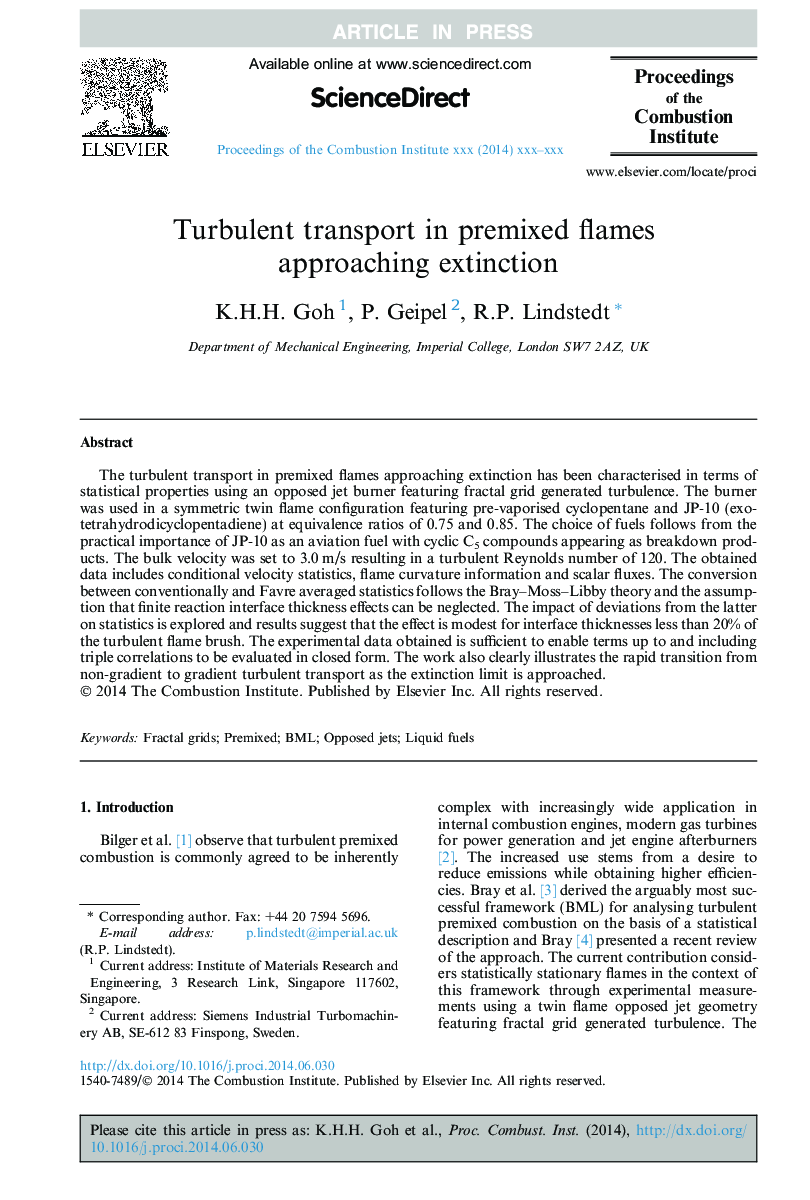| Article ID | Journal | Published Year | Pages | File Type |
|---|---|---|---|---|
| 6679245 | Proceedings of the Combustion Institute | 2015 | 8 Pages |
Abstract
The turbulent transport in premixed flames approaching extinction has been characterised in terms of statistical properties using an opposed jet burner featuring fractal grid generated turbulence. The burner was used in a symmetric twin flame configuration featuring pre-vaporised cyclopentane and JP-10 (exo-tetrahydrodicyclopentadiene) at equivalence ratios of 0.75 and 0.85. The choice of fuels follows from the practical importance of JP-10 as an aviation fuel with cyclic C5 compounds appearing as breakdown products. The bulk velocity was set to 3.0Â m/s resulting in a turbulent Reynolds number of 120. The obtained data includes conditional velocity statistics, flame curvature information and scalar fluxes. The conversion between conventionally and Favre averaged statistics follows the Bray-Moss-Libby theory and the assumption that finite reaction interface thickness effects can be neglected. The impact of deviations from the latter on statistics is explored and results suggest that the effect is modest for interface thicknesses less than 20% of the turbulent flame brush. The experimental data obtained is sufficient to enable terms up to and including triple correlations to be evaluated in closed form. The work also clearly illustrates the rapid transition from non-gradient to gradient turbulent transport as the extinction limit is approached.
Keywords
Related Topics
Physical Sciences and Engineering
Chemical Engineering
Chemical Engineering (General)
Authors
K.H.H. Goh, P. Geipel, R.P. Lindstedt,
